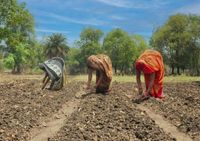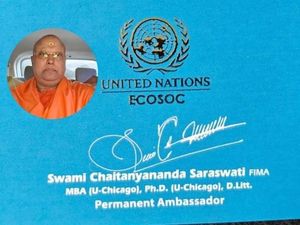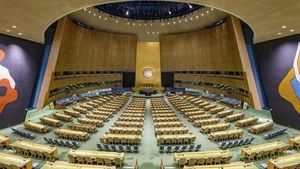Bangladesh’s readymade garment (RMG) industry, the backbone of its export economy, has notched another year of remarkable growth, even as it faces shifting global dynamics and domestic hurdles. According to data released on August 18, 2025, by Bangladesh Bank and the Export Promotion Bureau, the country’s imports of raw materials for the RMG sector rose by 9.9 percent in the financial year 2024-25, a clear sign of both resilience and ambition in the face of an evolving international marketplace.
In concrete terms, Bangladesh imported RMG raw materials—including raw cotton, yarn, staple fibre, and various accessories—worth a staggering US $18.44 billion in FY 2024-25. This marks a significant jump from the US $16.78 billion spent the previous year, as reported by Apparel Resources. The surge was driven by double-digit increases in several key categories: yarn imports grew by 12.3 percent to US $3.61 billion, textile and related articles soared 16 percent to US $8.69 billion, and staple fibre imports ticked up 10 percent to US $1.53 billion. Dyeing and tanning materials also saw a 5.2 percent increase, reaching US $877 million.
Yet, not all categories followed the upward trend. Raw cotton imports, a foundational input for the sector, actually slipped by 4.3 percent to US $3.46 billion. This dip stands out amid otherwise buoyant numbers, raising questions about supply chain strategies and the sector’s evolving needs. Still, the overall picture remains robust: the RMG sector generated US $39.35 billion in exports in FY 2024-25, up 8.84 percent from US $36.15 billion the year before. The sector’s dominance is unmistakable, accounting for over 80 percent of Bangladesh’s total export earnings of US $48.28 billion. Net exports from RMG alone totaled US $20.91 billion, underscoring its centrality to the national economy.
Industry leaders have been quick to interpret these numbers as a sign of stability and optimism. Inamul Haq Khan, senior vice president of the Bangladesh Garment Manufacturers and Exporters Association (BGMEA), described FY 2025 as a strong year for the sector. “The values of exports, imports, and net exports indicate a stable situation for the RMG industry. We are hopeful that FY ’26 will also be positive,” he told Apparel Resources. Khan’s confidence is grounded not just in the numbers, but in recent policy shifts that could tilt the competitive landscape in Bangladesh’s favor.
One such shift is the United States’ recent adjustment of Bangladesh’s reciprocal tariff to 20 percent, bringing it in line with major competitors except India, which now faces a 50 percent tariff. This move could have significant implications for regional trade flows. “This could lead to some orders shifting from India to Bangladesh. Our position in European and other markets remains strong, so raw material imports may rise further in FY ’26,” Khan noted. For Bangladesh, a country that has long relied on its competitive edge in the global textiles market, such developments are more than just numbers—they’re lifelines to continued growth and opportunity.
But the story isn’t all about rising tides. Imports of capital machinery—a barometer for future capacity and technological upgrades—declined sharply by 19.1 percent to US $2.81 billion. Other capital goods imports also fell by 5.9 percent to US $6.7 billion. Exporters and industry analysts have attributed this slowdown to political transitions and uncertainties, which have discouraged new investments and put a damper on expansion plans. The specter of instability, whether real or perceived, can weigh heavily on business decisions, especially in a sector as globally interconnected as garments.
Amid these challenges, the industry is also looking inward, seeking ways to shore up its foundations and future-proof its operations. In a notable move toward sustainability and quality assurance, CottonConnect—a global organization focused on sustainable cotton supply chains—has partnered with Bangladesh’s Cotton Development Board (CDB). According to EcoTextile, the two organizations signed a memorandum of understanding (MoU) on August 18, 2025, aimed at enhancing the quality, sustainability, marketability, and traceability of Bangladesh’s cotton supply. The partnership is set to integrate these improvements directly into the country’s clothing and textile manufacturing industry, signaling a shift toward more responsible and transparent sourcing practices.
The significance of this partnership cannot be overstated. As global consumers and brands increasingly demand sustainable products and ethical supply chains, initiatives like the CottonConnect-CDB collaboration position Bangladesh to meet these expectations head-on. The MoU outlines a roadmap for improving not just the technical aspects of cotton production—such as fiber quality and yield—but also the broader social and environmental impacts of the supply chain. By focusing on traceability, the partnership aims to give buyers and end consumers greater confidence in the origins and integrity of Bangladeshi textiles.
Still, the path forward is not without obstacles. Khan, the BGMEA vice president, has urged the government to address domestic bottlenecks that could stymie growth. “With sufficient policy support, we can meet targets as purchase orders are improving,” he said. Among the issues he flagged are energy shortages, port and customs inefficiencies, banking constraints, and broader challenges related to the ease of doing business. These are not new complaints—industry leaders have long called for reforms in these areas—but the stakes are arguably higher now, as Bangladesh seeks to consolidate its gains and fend off rising competition from regional rivals.
It’s a delicate balancing act. On one hand, the country is pushing to attract more orders by leveraging favorable trade policies and a reputation for quality and reliability. On the other, it must invest in modernization, sustainability, and infrastructure to ensure that growth is both inclusive and durable. The decline in capital machinery imports, for instance, could be a red flag if it signals underinvestment in future capacity. Conversely, it could simply reflect a temporary pause amid political uncertainty, with pent-up demand waiting to be unleashed once the dust settles.
Looking ahead, much will depend on the interplay between global market forces, domestic reforms, and the ability of industry leaders to adapt to changing expectations. The partnership between CottonConnect and the Cotton Development Board is a step in the right direction, promising not just better cotton but a more sustainable and transparent industry overall. Meanwhile, the steady rise in raw material imports—despite a dip in raw cotton—suggests that Bangladesh’s RMG sector is still very much in growth mode, ready to seize new opportunities as they arise.
As FY 2026 approaches, all eyes will be on whether Bangladesh can maintain its momentum, overcome its bottlenecks, and continue to set the pace in the global garment industry. For now, the numbers tell a story of resilience and ambition—a story that is far from over.




